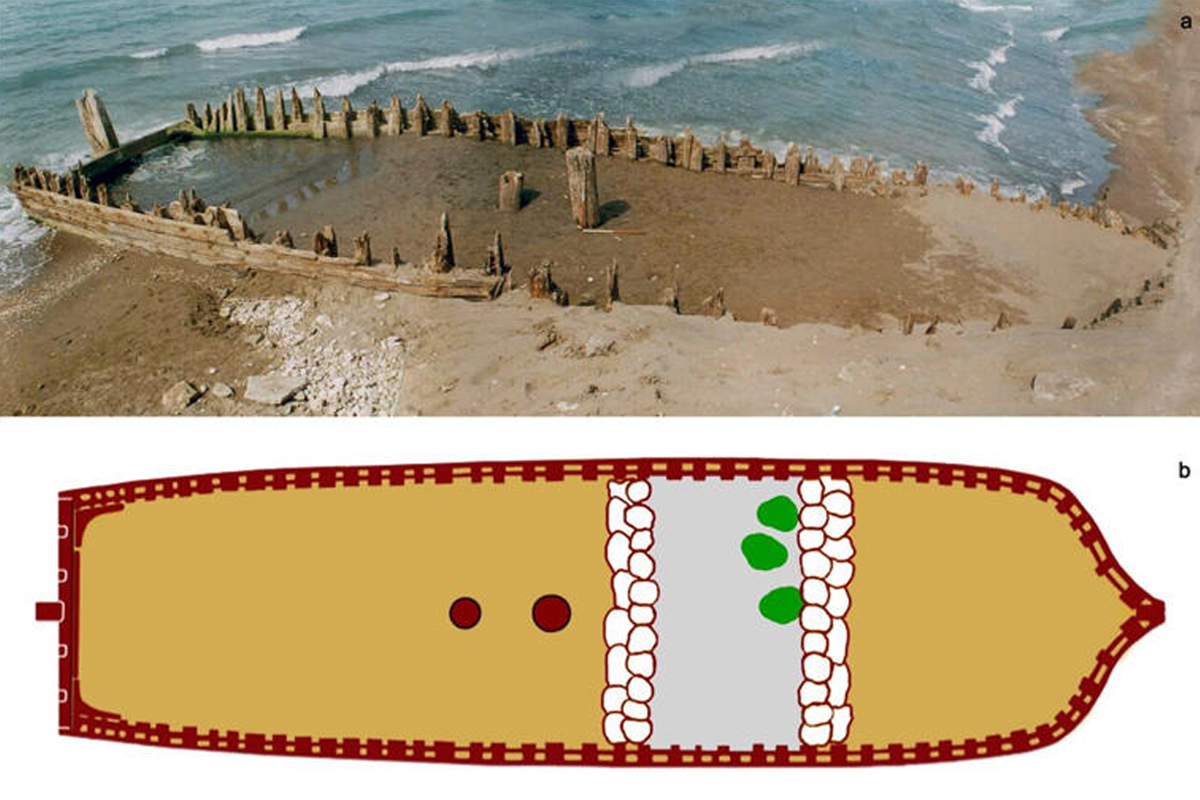A shipwreck has been unearthed near the village of Zaghemarz, revealed by retreating sand dunes along the southern shores of the Caspian Sea.
Experts suggest that the vessel’s construction methods indicate an 18th-century origin, with its design likely tracing back to Russia, possibly from the Volga Basin region or the Caucasus.
Excavations have exposed a large section of the preserved wooden hull measuring 28 metres in length, including the keel, endposts, framing timbers, hullplanks, bulkheads, and even the remains of two masts.
Within the wreck interior archaeologists found ropes, mats, remains of rope ladders, and three baskets containing plant material.
An archaeobotanical analysis revealed that the baskets contained fruits and seeds from six families, six genera, and five identifiable species, the most of which was represented by buckwheat – a domesticated food plant for which Russia is now the largest producer.
A wood analysis for both structural and non-structural elements of the vessel indicates that it was mainly built from Scots Pine (Pinus sylvestris type) and Spruce/Larch (Picea/Larix type). Additionally, a possible tool crafted from poplar wood (Populus sp.) was also found.
According to a study published in the Journal of Maritime Archaeology: “The discovery sheds new light on maritime trade and agricultural activities in the Caspian Sea region. The data also suggests that the ship may have played an important role in transporting agricultural products along key trade routes in the region.”
Header Image Credit : Journal of Maritime Archaeology
Sources : Journal of Maritime Archaeology – https://doi.org/10.1007/s11457-024-09430-6





